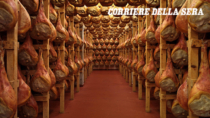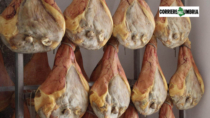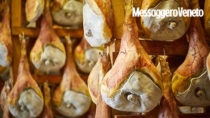Description
Prosciutto di San Daniele PDO is a cured charcuterie product obtained through the processing of fresh legs from Italian heavy pigs born, reared and slaughtered in 10 central-northern regions in Italy.
Production Area
The production area of Prosciutto di San Daniele PDO is within the entire municipal area of San Daniele del Friuli (35 km², 252 metres a.s.l.) in the Province of Udine, in the Friuli Venezia Giulia region. The pigs must be reared and slaughtered in the following regions: Friuli Venezia Giulia, Veneto, Lombardy, Piedmont, Emilia-Romagna, Umbria, Tuscany, The Marches, Abruzzo and Lazio.
Production Method
Processing begins with the weighing of the legs, which must be between 12.5 and 17.5 kg. For countries that prohibit the presence of the trotter, the weight must be between 12 and 17 kg. The legs are then trimmed to remove any imperfections caused by slaughtering. The meat is then salted for a period of time that depends on the weight of the leg; tradition requires that the leg remains in the salt for one day per kilo of the total weight. After the salt is cleaned off the leg, it is pressed for 24-48 hours to give it its characteristic guitar shape. It is then left to rest, after which it is washed, dried and greased. It is then ready to move on to the most important stage, curing, during which San Daniele’s microclimate plays a major role. The curing process lasts for a minimum of 400 days, starting from the date in which the leg enters the prosciutto factory.
Appearance and Flavour
Prosciutto di San Daniele PDO has a typical “guitar” shape and comes with the trotter. When cut, it has a uniform reddish-pink colour with streaks of white fat. It has an intense fragrance and a sweet, delicate taste. The aroma is characteristic and becomes more persistent the longer the product is cured. It reveals toasted nuances (bread crust), with hints of dried fruit and barley malt. The flavour is delicate, and the sapidity and aroma typical of cured meat blend together to produce a pleasant and satisfying sensation on the palate.
History
The origins of Prosciutto di San Daniele PDO date back to the Celts. In the mid-16th century, during the Council of Trento, chronicles of the time recount how the Patriarch of Aquileia sent 12 San Daniele hams to the prelates. Several documents reveal the presence of this product in French and Austrian courts, as well as on the tables of the Dogi. Towards the end of the 19th century, there were already several businesses in San Daniele which could boast of being suppliers to the Royal House and the Sacred Palaces of the Apostles.
Gastronomy
Prosciutto di San Daniele PDO should be kept in a cool dry place and in the refrigerator if cut into pieces, wrapped in a damp cloth with the cut end covered in thin foil. It is best cut thinly, just before eating and only after removing the rind and external “sugnatura”. It is considered a starter par excellence, either on its own or served with fleshy fruits like melon, pear, grapes, figs and pineapple. It is makes an ideal filling for sandwiches and focaccia, and is an indispensable ingredient in many other dishes: first and second courses, simple side dishes and tasty sauces. It should be paired with a dry white wine.
Marketing
The product is marketed as Prosciutto di San Daniele PDO. It is sold whole, boned or deboned, in pieces or sliced to order, and pre-sliced in trays.
Distinctive Features
Prosciutto di San Daniele PDO contains just three ingredients: selected Italian pig thighs, sea salt and San Daniele’s particular microclimate. No additives or preservatives are used. It is during the curing process that the product acquires its distinctive organoleptic properties, which depend directly on the micro-climate of hilly area of San Daniele: the cold air from the Alps meets the warm breezes from the Adriatic mitigated by the course of the Tagliamento River, which serves as a natural “air conditioner”.



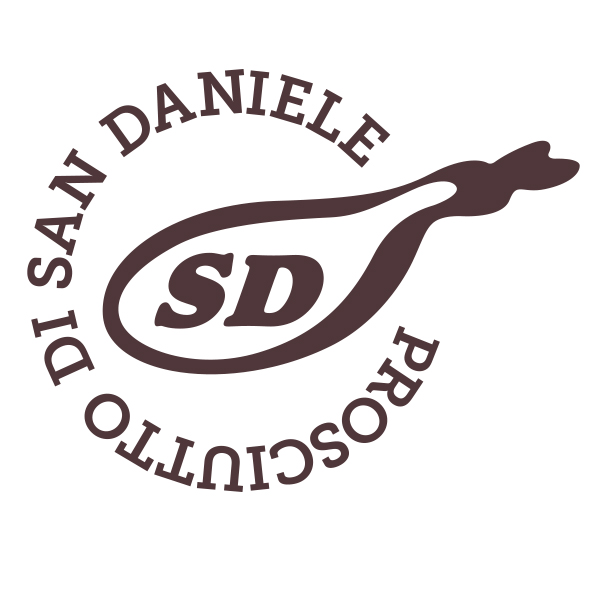





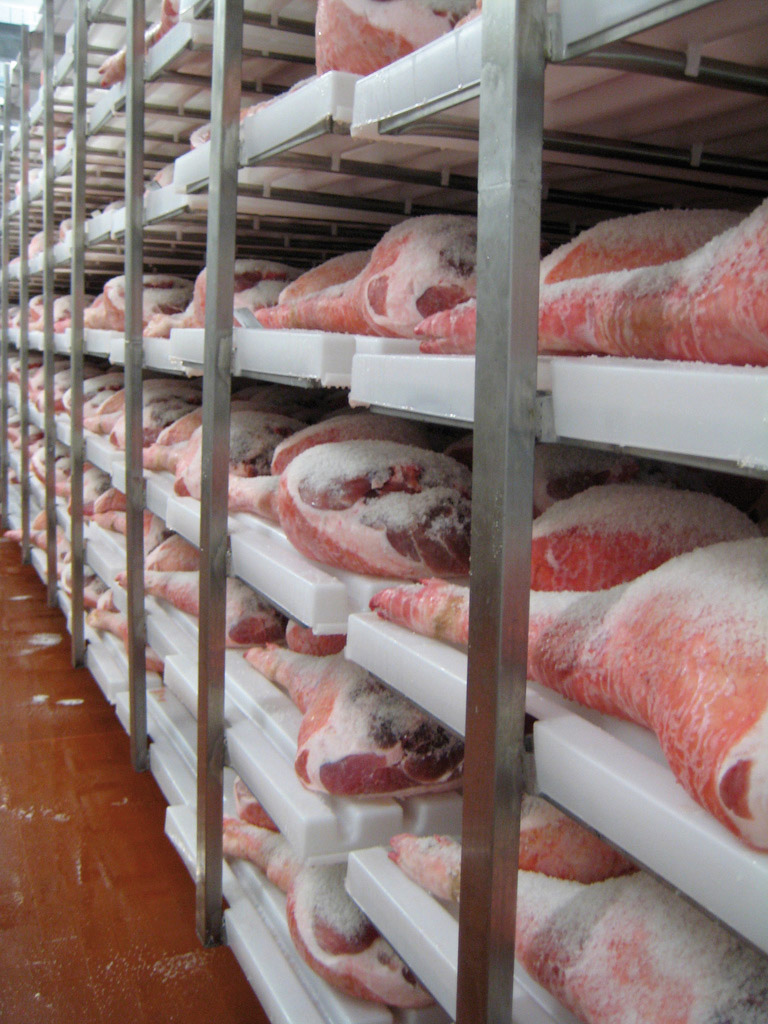

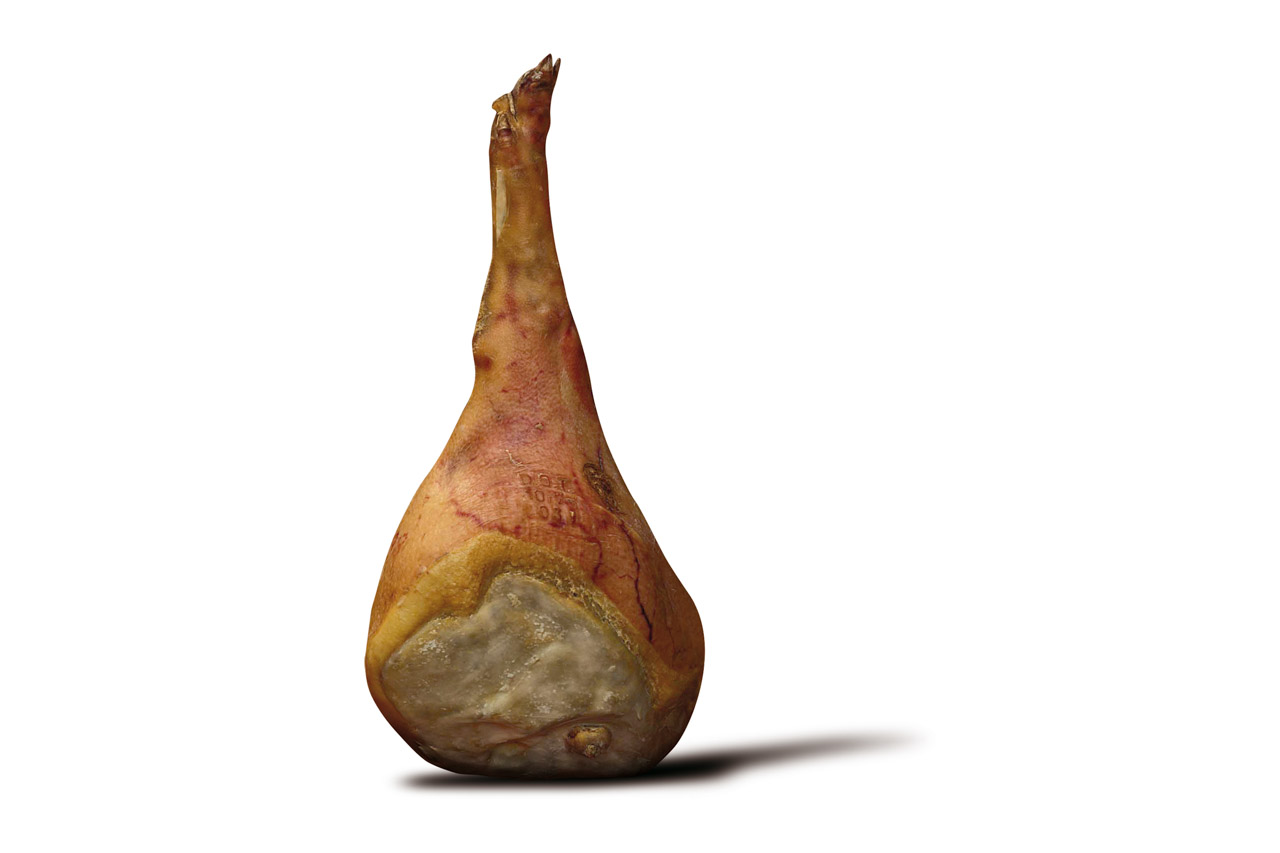

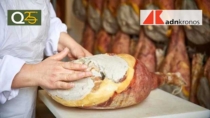


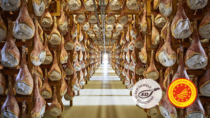

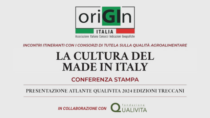



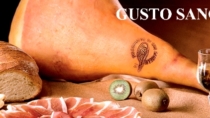


![[VIDEO] "Valore Concreto": la sostenibilità del Prosciutto di San Daniele DOP](https://www.qualivita.it/wp-content/uploads/2024/11/AskaNews_Sostenibilita-Prosciutt-San-Daniele-210x118.jpg)
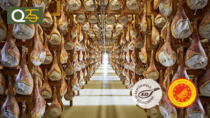
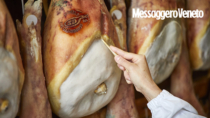
![[Roma] Valore concreto: modello di sostenibilità del Consorzio del Prosciutto di San Daniele](https://www.qualivita.it/wp-content/uploads/2024/11/Appuntamenti-Mauro-20-NOV-2024-scaled-210x118.jpg)
